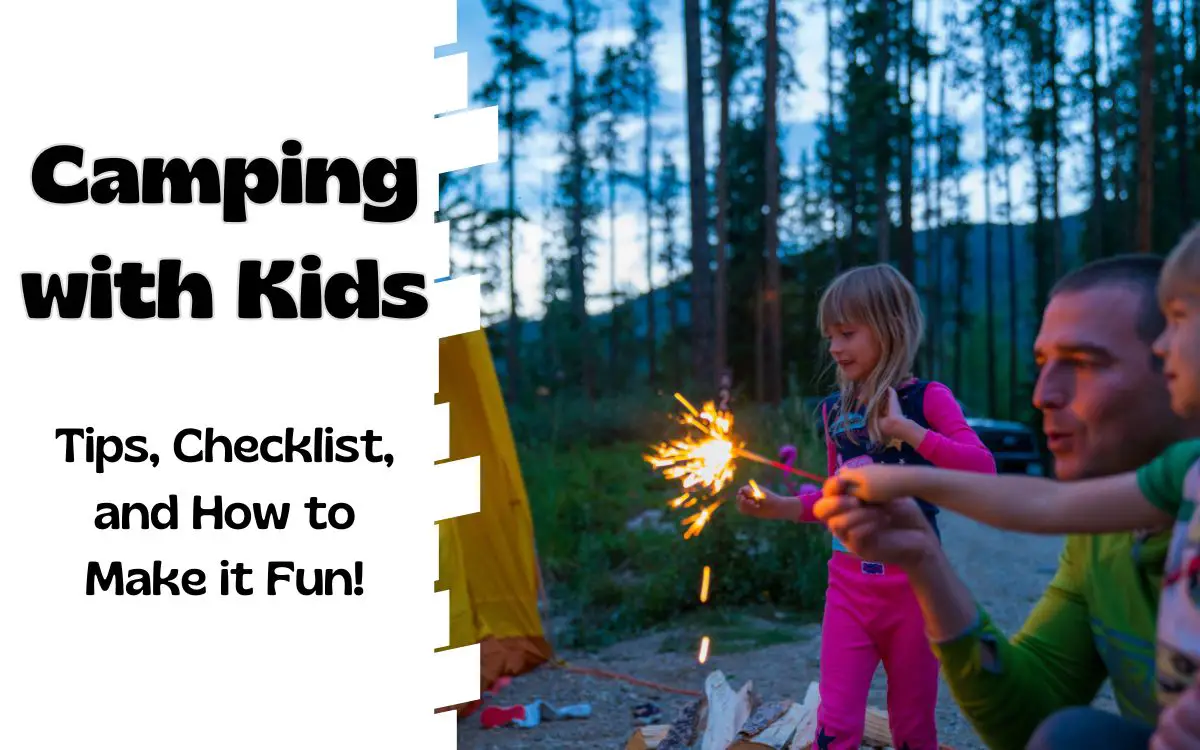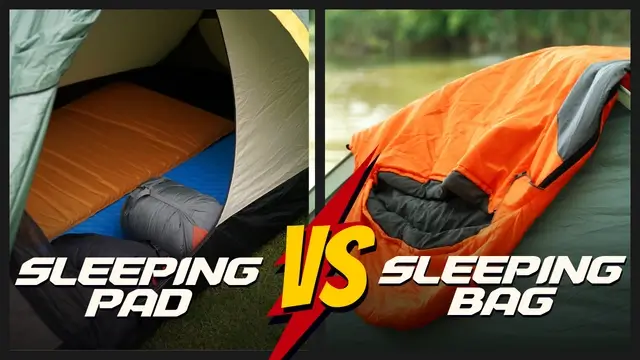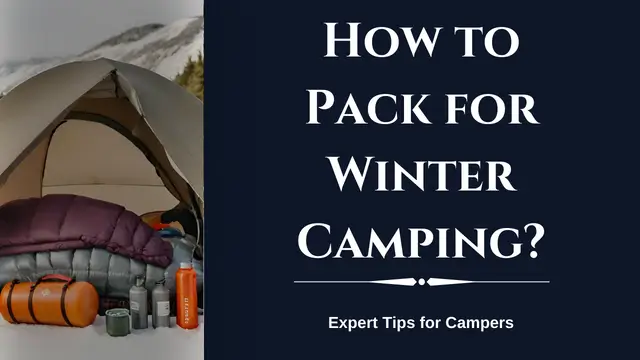How Much Water to Bring Camping?
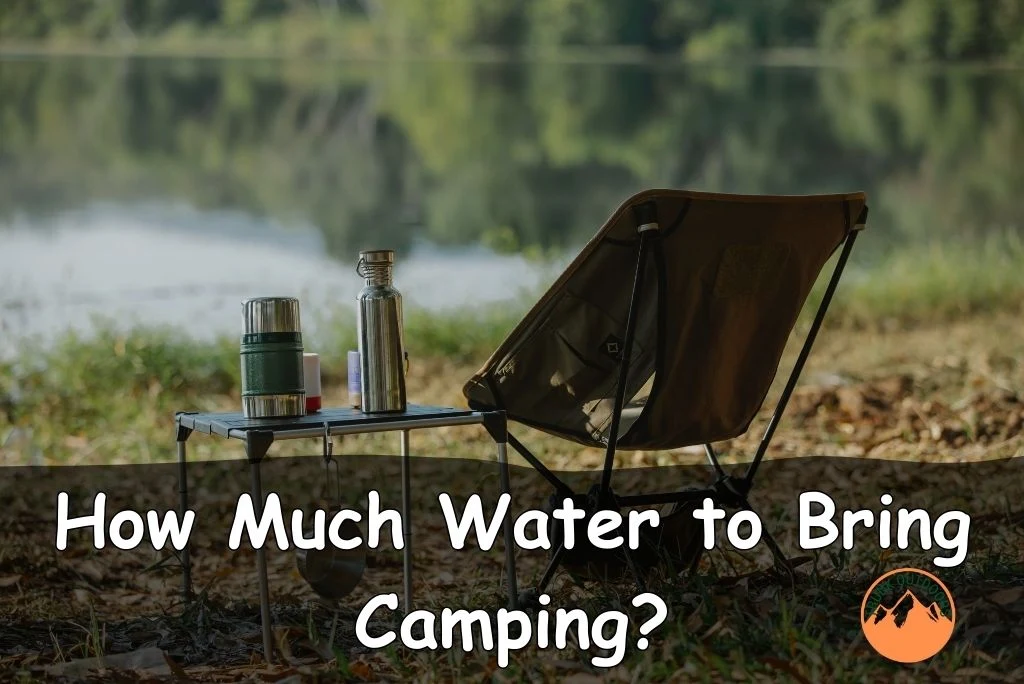
Are you planning for a camping trips, but you are wondering about how much water to bring camping? you ‘re in the right place.
I’m Jaden Burley, an experienced camper and someone who has had to camp many times in different conditions. I can tell you that when going camping, you should bring up to 6 liters of water per person per day in regular conditions.
In this article, I’ll provide you with useful insights, tips, and guidelines to ensure you have enough water for drinking, cooking, and personal hygiene. So, let’s dive in!
WARNING: All water amount suggestions included in this guide are for one person only.
Camping water needs for drinking
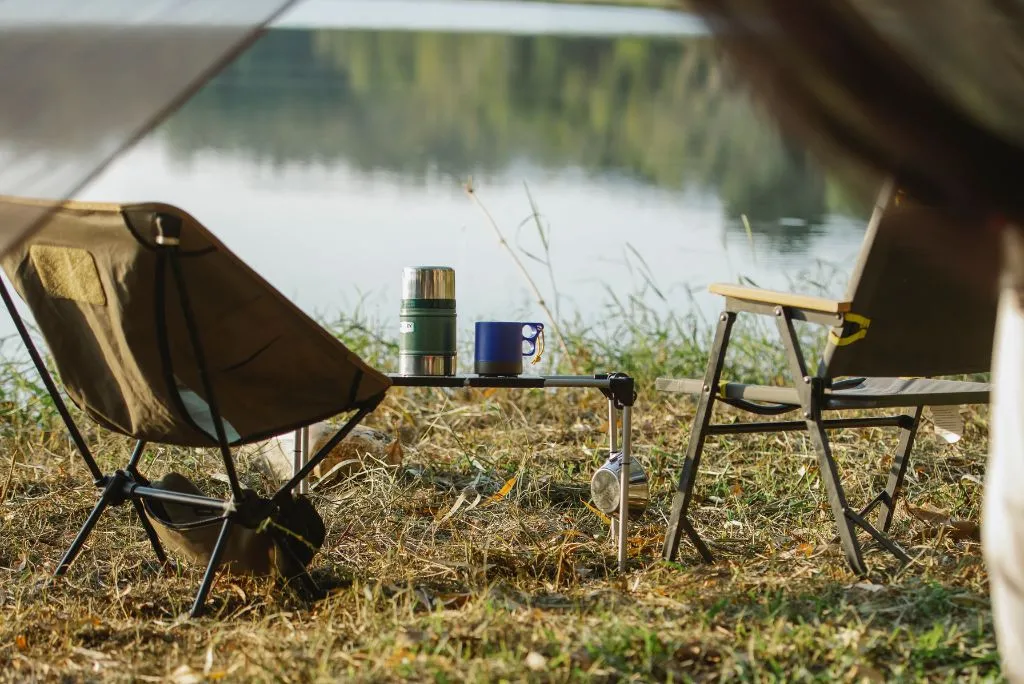
A crucial aspect of camping is ensuring you have enough water for drinking. The U.S. National Academies of Sciences, Engineering, and Medicine say that, adults need at least one gallon (3.7 liters) of water per day for men and 0.71 gallon (2.7 liters) for women [1].
How much water do children need?
Children generally need 0.3 to 0.5 gallon (1.13 – 1.9 liters) of water per day while camping, depending on their age [2].
- Younger children (under 8 years) tend to need closer to 0.31 gallons per day (4 to 5 cups) for hydration.
- Older children (8–16) typically need around 0.5 gallon (7-8 cups) of water per day while camping.
But, this amount is not set in stone and should be adjusted based on various factors:
- Weather Conditions: Hot or dry weather may increase your water needs.
- Activity Level: If you’re hiking or backpacking, expect to sweat more and, therefore, need more water.
- Individual Needs: Some campers may require more water based on their health and personal needs.
- Illness: Anyone who is sick, especially with vomiting or diarrhea[3], will need extra fluids to rehydrate.
Regardless of these factors, it’s essential to drink water regularly, even if you don’t feel thirsty. Staying hydrated is key to an enjoyable and safe camping experience.
Water for cooking and dishwashing while camping
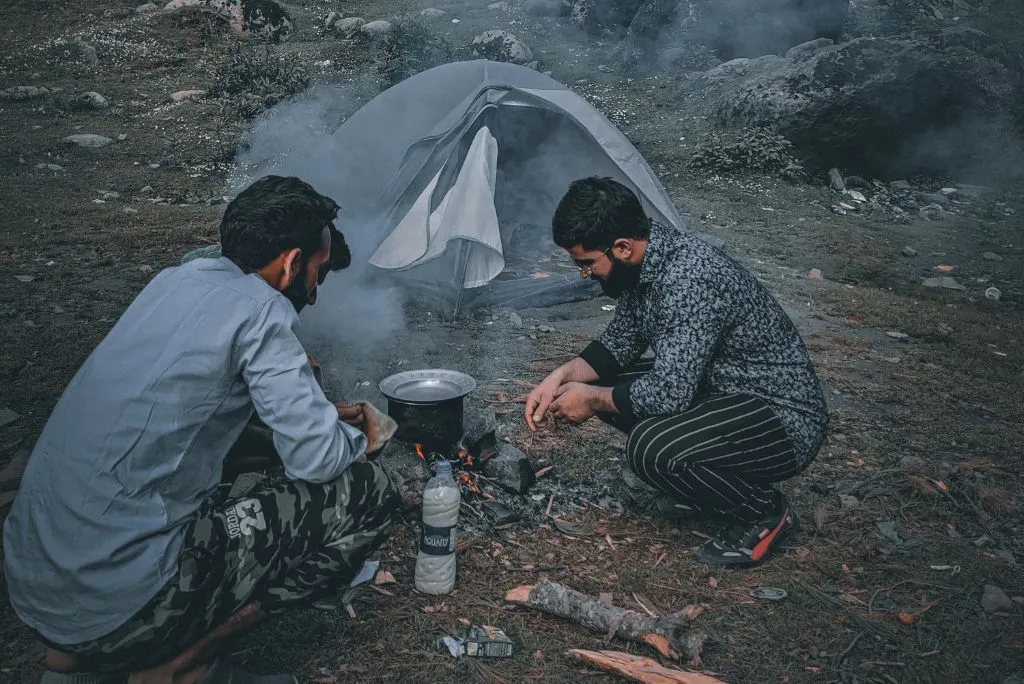
Cooking in the great outdoors is a rewarding experience, but it comes with its own water requirements. Plan on bringing approximately 1 liter of water per person per day for cooking.
Keep in mind these factors that determine how much water to bring for cooking and dish-washing while camping::
- Food Types: Certain dishes may require more water for preparation, like stews and casseroles, will use more water compared to simple boil-in-bag meals.
- Cleaning: Factor in water usage for cleaning dishes, utensils, and cookware.
- Campfire Cooking: If you’re cooking over a campfire, you might need extra water, as the fire can contribute to water evaporation.
- Water sources: If your campsite has a spigot or other water source, you may be able to refill it when needed for cooking and dishes. But plan to bring some initial water.
- Reusability: You can often reuse some dishwashing water for subsequent loads to minimize water usage. Only change the water when it gets too dirty.
Ensuring you have enough water for cooking not only sustains you but also enhances the overall camping culinary experience.
Water for Personal Hygiene While Camping
Maintaining personal hygiene is vital even in the wilderness. Allocate approximately 1-2 liters of water per person per day for personal hygiene. Consider the following factors:
- Washing Needs: The amount of water required depends on how much you use for washing hands, face, and body.
- Climate Impact: In cold climates, where sweating is reduced, you may need less water for personal hygiene.
As a general guideline, plan on:
- 1-2 liters of water per day, per person, for basic hygiene needs (hand washing, teeth brushing, toilet use)
- Usually 3-5 gallons of water total for each shower or bath, depending on length and hair washing
Camping is no excuse to neglect cleanliness, so plan accordingly to stay refreshed and comfortable.
Read about: How To Shower While Winter Camping?
How much water should I bring while backpacking?
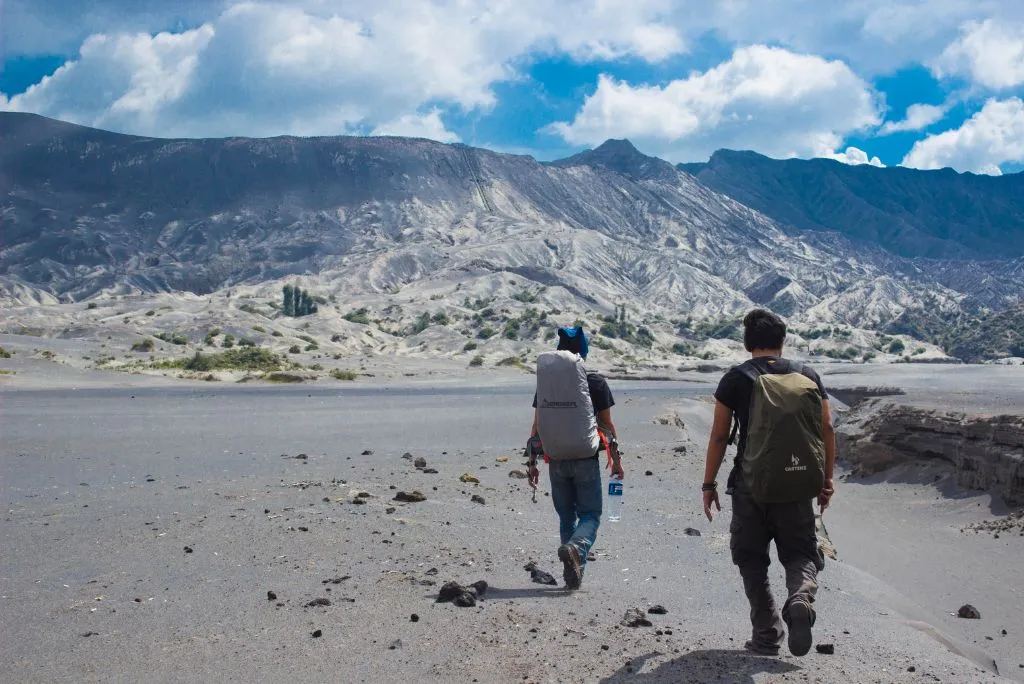
When backpacking, the amount of water you should bring depends on various factors, including the duration of your trip, weather conditions, the difficulty of the terrain, and personal factors such as your age, weight, and activity level.
Here’s a general guideline:
- Lenght of the Trip: A good starting point is to plan on carrying 1 liter of water for every 5 miles you’ll be hiking. This is a good rule of thumb for moderate hiking in mild weather.
- If you’re hiking in hot weather or at high altitude, you’ll need to carry more water. For every 10 degrees Fahrenheit above 70 degrees, add another 0.5 liters of water to your pack. For every 1,000 feet of elevation gain, add another 0.5 liters of water.
- Activity level: If you’re hiking with a heavy pack or doing strenuous activity, you’ll need to carry more water. For every hour of strenuous activity, add another 0.5 liters of water to your pack.
- Individual Needs: Some individuals may require more water due to factors like age, weight, and overall health. Listen to your body, and if you feel thirsty, drink more.
- Available water sources: If you’re going to be passing by water sources, you can pack less water and refill your bottles as you go. However, be sure to check the water quality before drinking it.
Golden Tip: carry a way to filter or treat water from sources like lakes and streams. And pack at least 20–30% extra water as a safety margin.
Backup and emergency supply:
When camping, it’s important to bring extra water as a safety margin and an emergency supply in case:
- Primary water supplies fail: Your main water containers could leak or break, requiring you to dip into backup reserves.
- Unexpected needs arise: You may use more water than planned due to unexpected conditions or activities.
- Water sources become unavailable: Potential water sources at your campsite could dry up or become contaminated, leaving only what you packed in.
As a general guideline, aim to bring:
- 20–30% more water than you expect to use for your planned trip. This accounts for unforeseen circumstances while still being reasonably packable.
- At least 1-2 liters (0.25–0.5 gallons) of extra water per person is an absolute minimum emergency reserve. This can tide you over until help arrives, if needed.
- Multiple types of water containers: mix durable hard containers with flexible soft bottles in case one type fails.
- A means of filtering or purifying water: This allows you to treat potentially unsafe water sources as a last resort.
- The ability to ration water if necessary: Only drink the minimum required to survive if you run out of packed-in water.
In an emergency situation where you’ve run out of packed-in water:
- Prioritize drinking water above all other uses.
- Avoid strenuous activity that increases sweating and water loss.
- Seek help as soon as possible from park rangers or other authorities.
- Stay calm and confident; help will arrive soon. Panicking only accelerates dehydration.
Carrying extra water as a safety margin and being equipped to handle potential water emergencies can significantly increase the margin of safety for your camping trip.
Visit this topic for more information on campsite safety tips
Dehydration signs while camping
Here are some of the effects and symptoms of dehydration while camping, with links to trustworthy sources:
- Fatigue or weakness: This is one of the earliest and most common symptoms of dehydration, as your body runs out of energy. Even mild dehydration of 1–2% of body weight can cause fatigue.
- Headache: Dehydration can cause headaches due to decreased blood flow to the brain and lower intracranial pressure. Even mild dehydration can trigger headaches.
- Dizziness or lightheadedness: When you become dehydrated, your blood pressure and blood volume decrease, causing dizziness and lightheadedness. This is common with 3% or more fluid loss.
- Confusion or irritability: Severe dehydration (over 10% fluid loss) can affect your mental state and mood, especially in young children. Symptoms include disorientation, confusion, and irritability.
- Dark urine or low urine output: As dehydration worsens, you produce more concentrated, dark yellow urine. Reduced urine output is a later sign of severe dehydration.
Tips for conserving water while camping
- Reuse dishwater and bathwater: Reuse the same “greywater” for multiple tasks to maximize its usage. Use dishwater for hand washing and bathwater for cleaning.
- Take Navy showers: Wet down, turn off water, lather up, then rinse briefly. Limit shower time to 2-3 minutes total.
- Use wet wipes for hygiene: Use baby wipes instead of showering for quick cleanups between proper bathing. Save showering for every 2-3 days.
- Bring a kit of washcloths: Use washcloths to bathe individual body parts instead of taking multiple full showers. Rinse cloths in one pot of water.
- Break camp during rainy periods: Rain collects water you can then drink or use for washing. Timing your breaks well can cut down on water needs.
- Cook with a stove: Boiling large quantities of water for dinner uses less water per meal than other cooking methods.
- Only drink when truly thirsty: Experienced campers train themselves to drink deliberately, only when their body truly needs it.
- Pack a platypus: A collapsible water bladder reduces airspace and waste compared to traditional rigid bottles.
- Don’t overpurify water: Some silty water may be drinkable with just filtering instead of iodine treatment or boiling.
- Keep hydrated to avoid thirst: Enter your trip fully hydrated to avoid feeling thirsty and compelled to overdrink the first day.
- Bring a backup filter: In case your primary filter fails, have another one packed as security against dangerous dehydration.
FAQs
What are some good water purification methods while camping?
Boiling water for at least one full minute is the most effective purification method but also the most time consuming while chemical treatments with iodine or chlorine dioxide droplets kill microbes faster though leave behind taste. Filtering water through a pump, gravity or squeeze filter first then further treating can remove particulates and some bacteria.
What are the best camping water storage methods?
Hardwater bottles made from durable plastic or metal containers are best for camping due to their durability and ability to keep water cold for long periods of time but collapsible water bladders and soft water bags offer more compact storage and less wasted airspace during transport.
Is it safe to refill 5 gallon water bottles?
Refilling 5 gallon water bottles for camping and reuse is generally safe if the bottle is cleaned thoroughly between uses with hot soapy water and rinsed well to remove any residue but over time the plastic degrades and can leach chemicals into the water so it’s best to replace 5 gallon water bottles after a few refills.
Conclusion
We hope this guide has shed light on the crucial aspect of water management during camping trips.
By being well-prepared and bringing an adequate supply of water, you can stay hydrated, prevent dehydration-related issues, and fully enjoy your time in nature.
Don’t forget to subscribe to our newsletter and follow us for more informative content on outdoor activities and camping tips.
Sources:
